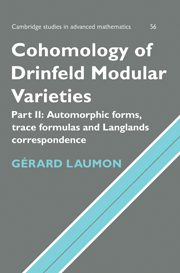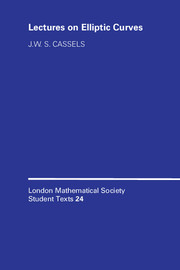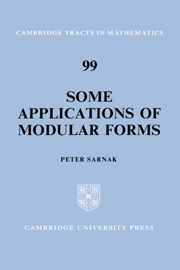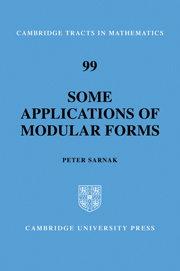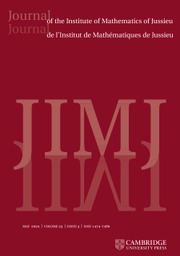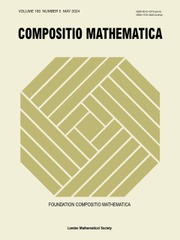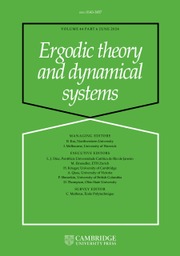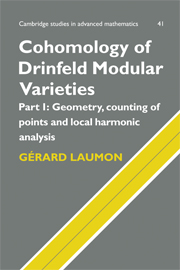Cohomology of Drinfeld Modular Varieties
Cohomology of Drinfeld Modular Varieties provides an introduction, in two volumes, both to this subject and to the Langlands correspondence for function fields. These varieties are the analogues for function fields of the Shimura varieties over number fields. The Langlands correspondence is a conjectured link between automorphic forms and Galois representations over a global field. By analogy with the number-theoretic case, one expects to establish the conjecture for function fields by studying the cohomology of Drinfeld modular varieties, which has been done by Drinfeld himself for the rank two case. This second volume is concerned with the Arthur-Selberg trace formula, and with the proof in some cases of the Rmamanujan-Petersson conjecture and the global Langlands conjecture for function fields. It is based on graduate courses taught by the author, who uses techniques which are extensions of those used to study Shimura varieties. Though the author considers only the simpler case of function rather than number fields, many important features of the number field case can be illustrated. Several appendices on background material keep the work reasonably self-contained. It is the first book on this subject and will be of much interest to all researchers in algebraic number theory and representation theory.
- Modern view of the subject - includes the Langlands correspondence
- Author is well placed to write
- Based on graduate courses in USA
Product details
March 1997Hardback
9780521470612
380 pages
229 × 152 × 25 mm
0.73kg
Available
Table of Contents
- Preface
- 9. Trace of fA on the discrete spectrum
- 10. Non-invariant Arthur trace formula: the geometric side
- 11. Non-invariant Arthur trace formula: the spectral side
- 12. Cohomology with compact supports of Drinfeld modular varieties
- 13. Intersection cohomology of Drinfeld modular varieties
- Appendix D. Representations of unimodular, locally compact, totally discontinuous, separated topological groups: addendum
- Appendix E. Reduction theory and strong approximation
- Appendix F. Proof of lemma 10. 6. 4
- Appendix G. The decomposition of L2G following the cuspidal data.

